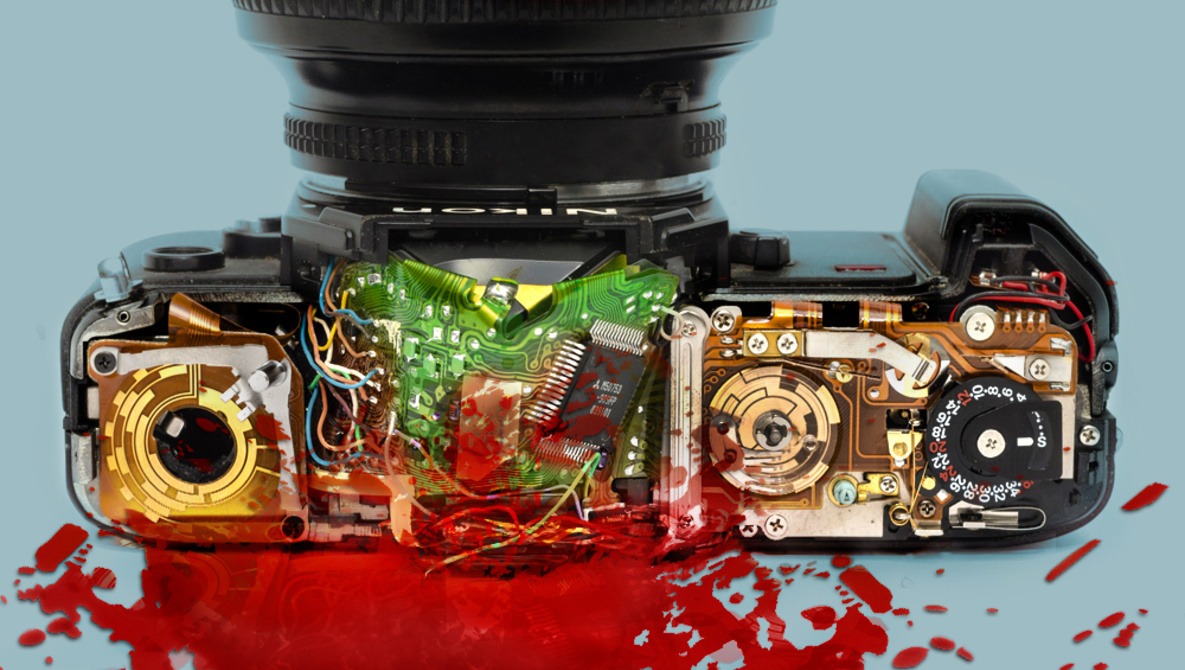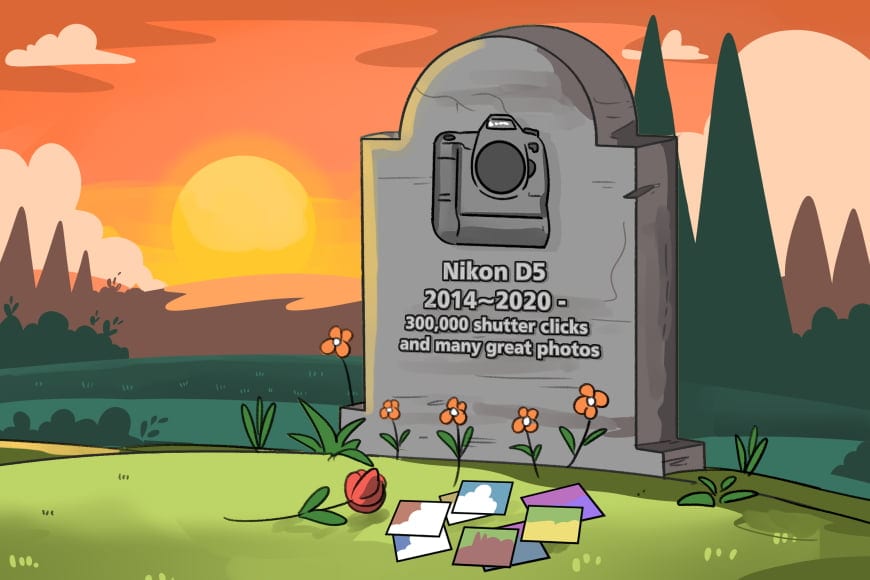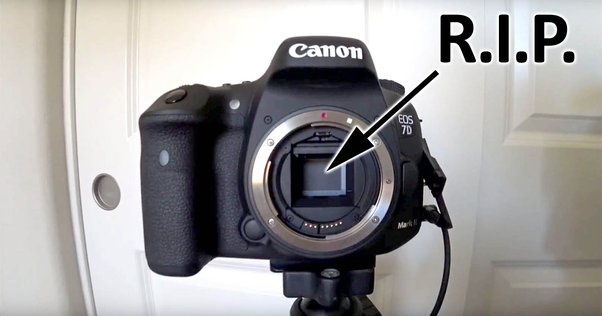What Happens When Shutter Count Is Reached: Upon reaching the shutter count limit, a camera may exhibit wear or require maintenance. Most modern cameras continue functioning but may need shutter replacement soon.
Photographers often assess a camera’s life expectancy through its shutter count, akin to how one might consider mileage on a car. Digital camera shutters endure a finite number of actuations, typically ranging from 50,000 to several hundred thousand, depending upon the model and build quality.
As a camera approaches its shutter count limit, it doesn’t suddenly fail. Instead, the likelihood of malfunction increases, signaling that the shutter mechanism’s longevity is nearing its end. It’s essential for camera owners to understand that while shutter failure is a possibility, many cameras surpass their estimated shutter life without any issues. Enthusiasts and professionals alike monitor shutter counts to anticipate when their equipment might need servicing or replacement, ensuring minimal disruption to their work. Maintaining awareness of your camera’s shutter count helps in planning for potential future repairs, thereby avoiding unexpected downtime.

Credit: fstoppers.com
The Significance Of Shutter Count
A camera’s shutter count acts much like the odometer on a car. It tells us how many times the camera has taken a picture. Photographers look at this number to gauge how much life their camera has left. When a camera reaches its shutter count limit, it can mean it’s time for a service or, sometimes, a replacement. Let’s dive into why shutter count matters.
Measuring Camera Lifespan
Every camera has a shutter life expectancy, much like tires have a tread life. Manufacturers estimate a camera’s lifespan using the shutter count. This number helps predict when the shutter might fail.
It also helps users plan for maintenance or potential upgrades. Cameras with a high shutter count may need a shutter replacement to keep shooting smoothly.
Here is a simple guide to understanding shutter life expectancy:
- Entry-Level Cameras – around 100,000 shots
- Mid-Range Cameras – around 150,000 shots
- Professional Cameras – 300,000 shots or more
Impact Of Shutter Count On Photography
Shutter count not only signals camera lifespan but also affects photography. Here is how:
- Resale Value: Cameras with lower shutter counts often sell for more.
- Performance Confidence: A lower count means fewer worries about the shutter failing during a shoot.
- Image Quality: Over time, a worn shutter can affect image sharpness and detail.
It’s crucial for photographers to keep an eye on shutter count. Doing so helps anticipate maintenance and ensures high-quality images.
Credit: www.quora.com
Shutter Count Milestone
Reaching the Shutter Count Milestone is akin to a vehicle hitting a high mileage mark. It signals a significant moment in the life of a camera. Understanding what happens at this point is crucial for photographers who value their equipment’s longevity and performance.
Anticipating End Of Life
Rarely does a camera stop working abruptly at its shutter count limit. Rather, think of this moment more like a warning signal. It tells you to prepare for potential maintenance or replacement needs. Signs might include slower response times or an unexpected malfunction during a shoot.
- Monitor camera performance closely
- Plan for service or back-up options
- Invest in preventative care
Manufacturer’s Estimated Shutter Actuations
A camera’s lifespan is often gauged by Manufacturer’s Estimated Shutter Actuations. This figure suggests how many photos you can take before the shutter may need attention. Manufacturers set these numbers based on rigorous testing.
Expect variations across models and makes. Higher-end cameras often boast larger counts, resilient for extensive use. Entry-level models might have lower thresholds, suited for casual photography.
| Camera Type | Estimated Actuations |
|---|---|
| Professional | 400,000+ |
| Mid-range | 150,000 – 300,000 |
| Entry-level | 50,000 – 100,000 |
Symptoms Of A High Shutter Count
Like a car’s mileage, shutter count reveals a camera’s age. High shutter counts can lead to performance issues. Let’s discuss common symptoms that indicate your camera’s shutter may be reaching its life expectancy.
Signs Of Wear And Tear
A camera’s shutter undergoes physical stress with each click. Over time, this stress causes wear. Here are signs your camera’s shutter may be worn:
- Strange noises when taking a photo
- Erratic shutter movement: not as smooth as before
- Excessive shutter lag
- External damage marks around the shutter area
Performance Degradation Over Time
Performance can degrade with a high shutter count. Below are signs of degradation:
- Delayed response to shutter release button
- Inconsistent shutter speeds
- Unpredictable image outcome
- Misfires: camera doesn’t take a picture when expected
If these symptoms occur, consider a professional camera checkup or prepare for a shutter replacement.

Credit: shotkit.com
Reaching The Maximum Shutter Count
Imagine a camera as a sports car. Just like a car with a mileage limit, cameras have a shutter count. This number tells how many pictures a camera can snap before the shutter may need a change. When a camera hits its maximum shutter count, it’s like your car’s odometer rolling over. Let’s buckle up and examine what happens next!
Camera Functionality Post-milestone
Does the camera stop working at its maximum shutter count? Not exactly. Think of the maximum shutter count as a milestone rather than an endpoint. The shutter might keep clicking, but its condition could change.
- Shutter Health: It may show signs of wear, like slower response times or odd sounds.
- Image Quality: Look out for dark spots or stripes in your photos, suggesting a tired shutter.
- Repair Costs: Keep in mind, fixing a shutter can be expensive, almost like engine work on that sports car!
Immediate Consequences For Photographers
When your camera’s shutter counts to the max, prepare for impact. Your shooting schedule might need a plan B.
| Consequence | Details |
|---|---|
| Missed Shots | If the shutter fails, no photo! |
| Unexpected Costs | Repairs or new camera may be necessary. |
| Job Delays | Broken camera means postponed shoots. |
Professional photographers should especially be ready. Having a backup camera is smart. Don’t let a max shutter count ruin your day. Always have a plan for when your gear hits its peak. It’s part of being a pro!
Addressing A High Shutter Count
A camera’s lifespan often ties to its shutter count. Think of it as the number of times a camera can click a photo. Once a camera hits its high shutter count, it’s like an old car; maintenance becomes vital. Understanding what to do can save both time and money, as well as extend your camera’s life.
Options For Maintenance And Repair
Your camera isn’t done when it reaches the high shutter count. It just requires some TLC. Like an oil change for your car, your camera needs care too.
- Clean your camera: Dust can mess with camera shutters.
- Professional check-up: Sometimes a professional can spot something you can’t.
- Shutter replacement: Think of it as changing a tire. It’s a fresh start for your camera’s mileage.
Never overlook the importance of regular services. These can prevent wear and tear from taking a toll.
Assessing The Need For A Replacement
Just like toys wear out, cameras do too. A high shutter count raises a question: Do I need a new one?
| Camera Use | Replace it? |
|---|---|
| Light use, like family photos | Maybe not yet |
| Heavy use, like sports events | Consider looking for a new one |
Quality drops or if repairs cost more than a new camera, it’s time to buy a new one. Your needs and the camera’s condition matter most.
Impact On Camera Resale Value

Digital cameras have a feature called shutter count, a tally of how many photos it has taken. Like mileage on a car, shutter count can greatly affect a camera’s resale value. For photographers looking to sell their gear, understanding how shutter count influences price is crucial.
Understanding Market Perceptions
Buyers often view shutter count as a lifespan indicator. A lower count suggests a longer remaining camera life. Cameras with a lower shutter count maintain a higher value in the second-hand market.
Negotiating With Shutter Count Information
Shutter count gives sellers leverage during price discussions. With a low count, sellers can justify a higher asking price. Buyers might be more willing to pay extra, knowing the camera should last longer. A table below outlines general perceptions based on shutter counts.
| Shutter Count Range | Perceived Condition | Impact on Value |
|---|---|---|
| < 10,000 | Like New | High Value |
| 10,000 – 50,000 | Lightly Used | Good Value |
| 50,000 – 100,000 | Moderately Used | Average Value |
| > 100,000 | Well Used | Lower Value |
Frequently Asked Questions For What Happens When Shutter Count Is Reached
Does Shutter Count Limit Camera Lifespan?
Shutter count is an indicator of a camera’s usage, not a strict limit on lifespan. Cameras can still operate after reaching their rated shutter count, but the risk of the shutter failing or degrading in performance increases.
What Occurs After A Camera Hits Shutter Count?
When a camera reaches its shutter count limit, it may continue to work perfectly. However, the likelihood of the shutter mechanism wearing out and requiring replacement or repair is higher.
How To Check Your Camera’s Shutter Count?
To check a camera’s shutter count, use software that reads the camera’s EXIF data where the shutter count is often stored. Some camera manufacturers include shutter count information in their own software utilities as well.
Can A Shutter Count Be Reset Or Altered?
A camera’s shutter count cannot be reset by the user. It’s a non-resettable value that reflects actual usage. Tampering with it involves complex processes and is frowned upon, as it misrepresents the camera’s condition.
In Conclusion:
Reaching the shutter count’s upper limit need not be a cause for alarm. Your camera can still capture stunning images. Consider this milestone a reminder to maintain your gear. Keep shooting, and if necessary, plan for a professional service or an upgrade.
Embrace every click; each one tells a story.


